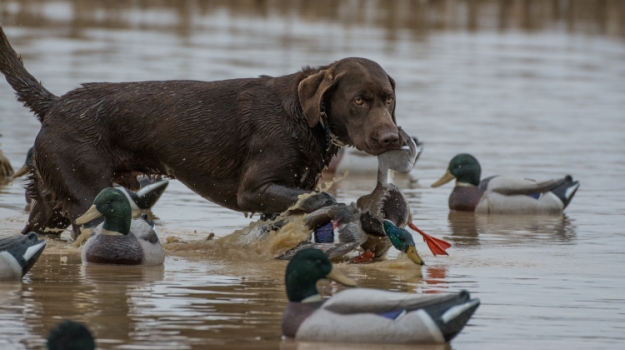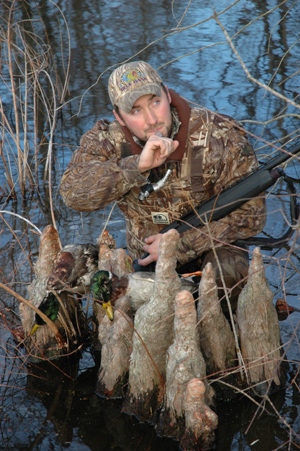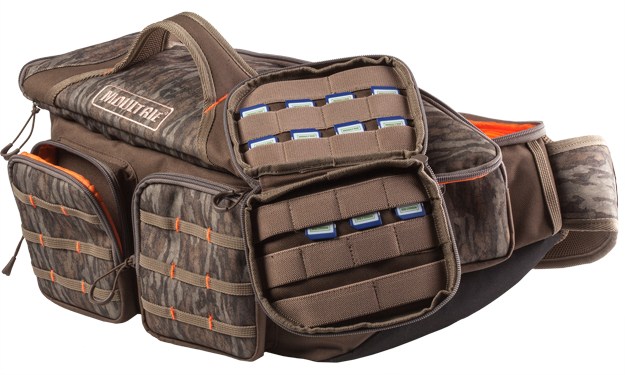
Our decoy spreads are different in most of the holes we hunt. We know that ducks don’t like to fly over decoys or other ducks before they land. So, if we have a north wind in our face, we don’t put any ducks on the south side of where we’re hunting. If we have a north wind, we’ll concentrate most of our decoys on the north side of our duck hole. Later in the year, we’ll put out fewer decoys than we do early in the year. One of my favorite types of spreads is to put out my decoys in small clusters to appear to be family groups of ducks sitting on the water together. When I put out a large spread, I'm always careful to make it look like the decoys are all in separate family groups - rather than being just one large mass of ducks. I like the drake mallard decoys for my spread, because those green heads and white necks really separate the decoys from the cover around them, and the ducks can see them much easier from farther away from where I've taken a stand. Most of the spreads we use will be 80-percent drakes and 20-percent hens.
 Three ways to get to good duck spots that most hunters completely overlook are to:
Three ways to get to good duck spots that most hunters completely overlook are to:
- Hike in. Hike as far as you can before daylight along the shoreline. When you get to the spot you want to hunt, wade out into the water and look for standing timber, the roots of trees that have fallen over and are standing out of the water, or any kind of cover you can get behind or in to hide from the ducks.
- Take a boat. Many of the places where we hunt, we’ll go by boat to reach a spot where we want to hunt. Then we’ll chain the boat to a tree and walk or wade the rest of the way to get to the area we plan to hunt. When hunting some places, we take a boat, and we’ll tow or carry another boat. Then we use the second boat to reach spots that we can’t get to with the first boat. Sometimes, we hunt from duck holes that are too deep to wade to, but we can drive a big boat into those deep sloughs, and take the little boat to get to another place where most hunters won’t go. One of the main strategies that we use is before we hunt we want to determine how to get to quality duck spots before anyone else can get to them. Most duck hunters want to take the easiest route they can take to reach a good duck-hunting spot. I don’t like to get in boat races before daylight when I'm hunting.
- Use a landownership map. Another map that I haven’t mentioned so far is a map that shows landownership around a public-hunting area. To get to a spot that other hunters may not get to, or get to as fast as we can, I’ll often call or visit a landowner whose land borders a public duck-hunting area. I’ll ask for permission to cross his land to reach an isolated spot on that public waterfowl-hunting area. If I get permission, we may be able to get to the spot we want to hunt where no one has hunted, or we may get to the spot we want to hunt before anyone else gets there. This strategy has been very-successful for us. Like I said before, one of the most-critical keys to successfully hunting waterfowl on public lands is to either get to a spot where people in boats will probably never reach, or get to a good spot before anyone else gets to it.
Day 4: What To Do When Hunters You Don’t Know Move Into the Spot You're Hunting



























